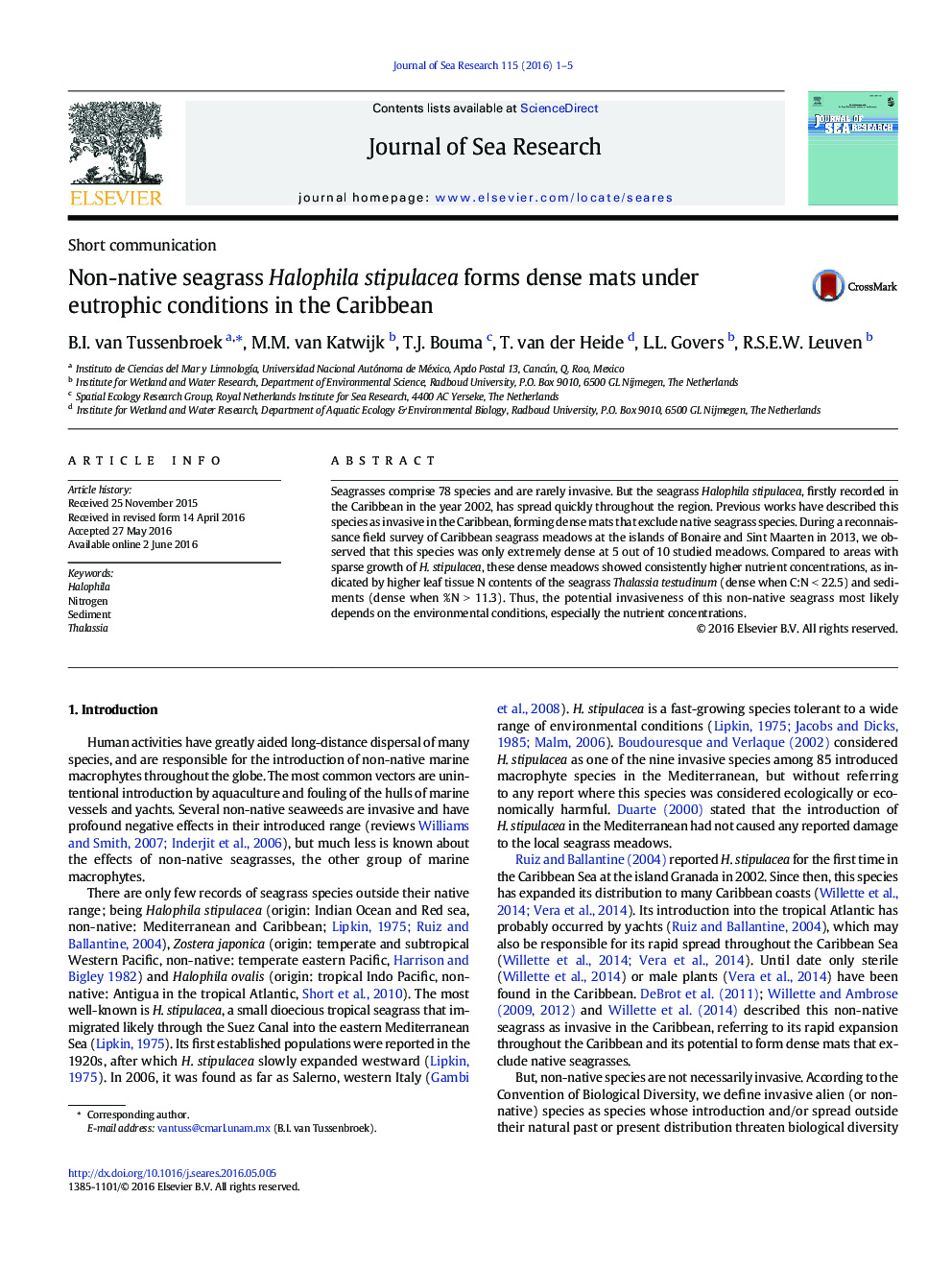| Article ID | Journal | Published Year | Pages | File Type |
|---|---|---|---|---|
| 4549542 | Journal of Sea Research | 2016 | 5 Pages |
•Non-Native Halophila stipulacea into the Caribbean displays either sparse or dense growth forms.•Extremely dense mats may exclude local seagrass species.•These extremely dense H. stipulacea beds were found in eutrophic areas.
Seagrasses comprise 78 species and are rarely invasive. But the seagrass Halophila stipulacea, firstly recorded in the Caribbean in the year 2002, has spread quickly throughout the region. Previous works have described this species as invasive in the Caribbean, forming dense mats that exclude native seagrass species. During a reconnaissance field survey of Caribbean seagrass meadows at the islands of Bonaire and Sint Maarten in 2013, we observed that this species was only extremely dense at 5 out of 10 studied meadows. Compared to areas with sparse growth of H. stipulacea, these dense meadows showed consistently higher nutrient concentrations, as indicated by higher leaf tissue N contents of the seagrass Thalassia testudinum (dense when C:N < 22.5) and sediments (dense when %N > 11.3). Thus, the potential invasiveness of this non-native seagrass most likely depends on the environmental conditions, especially the nutrient concentrations.
